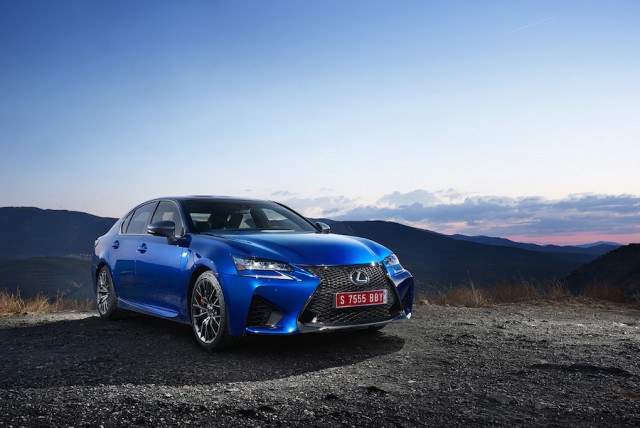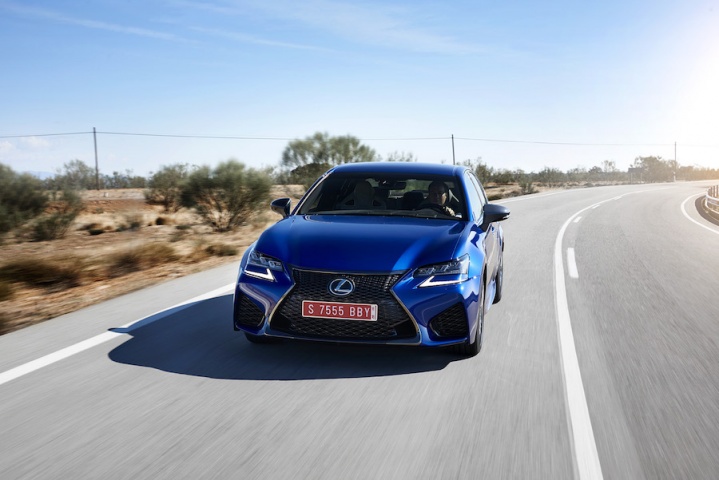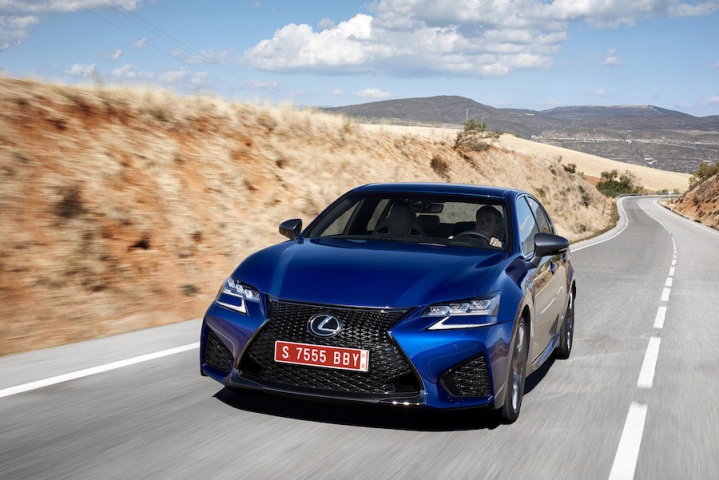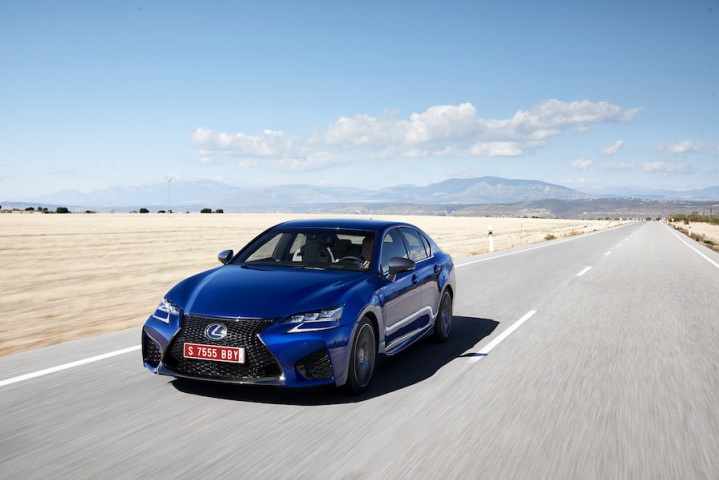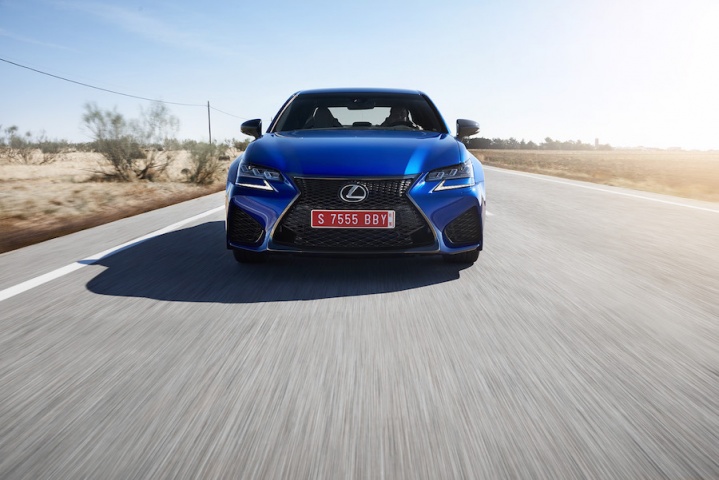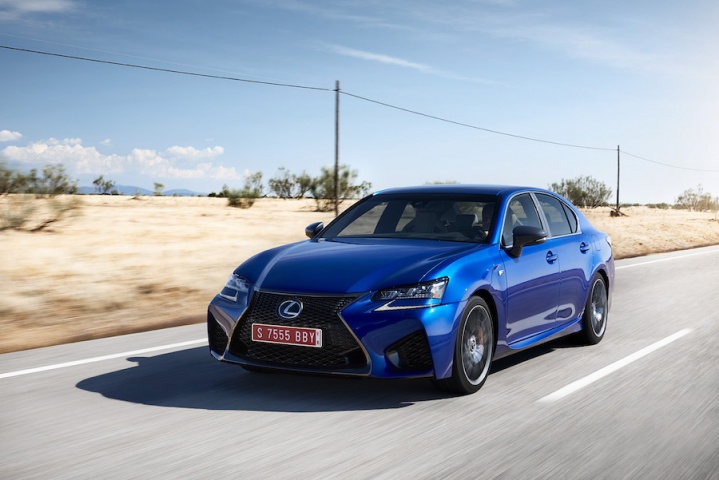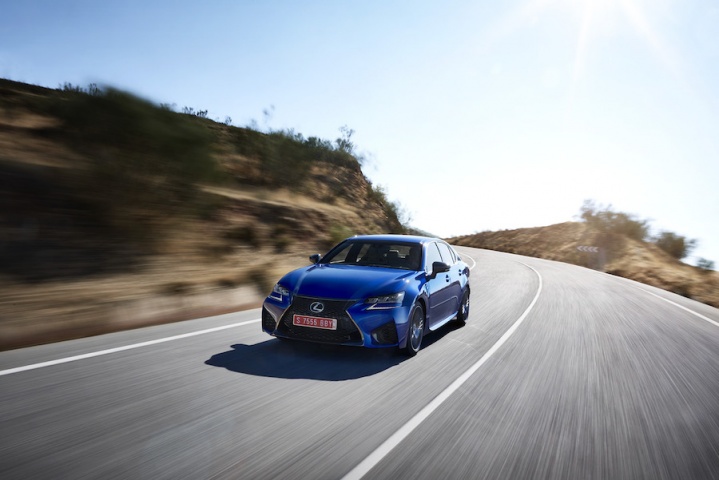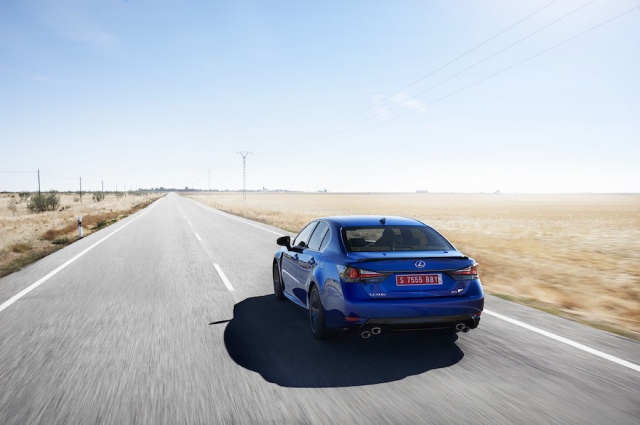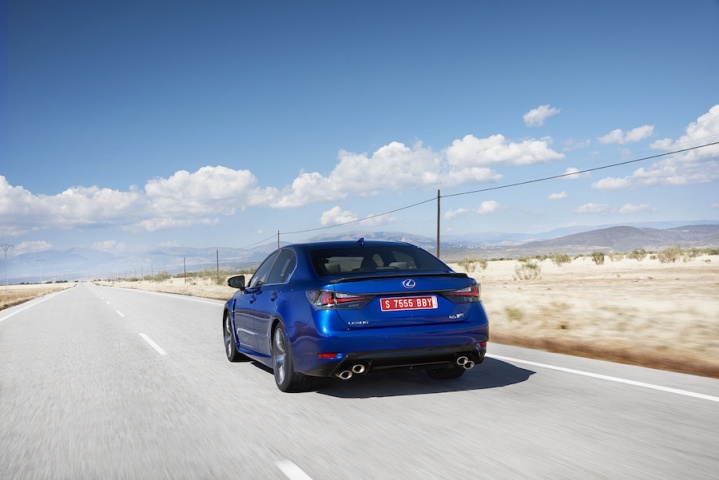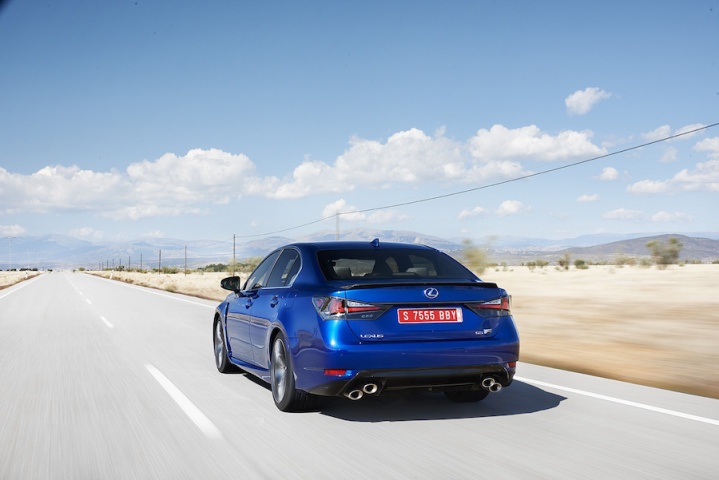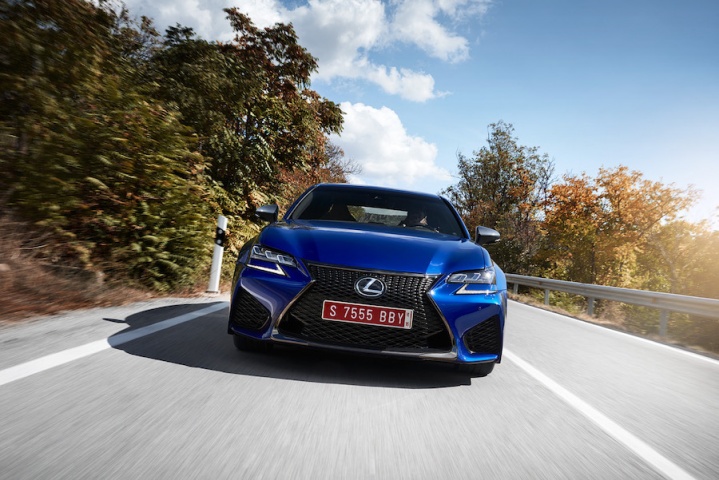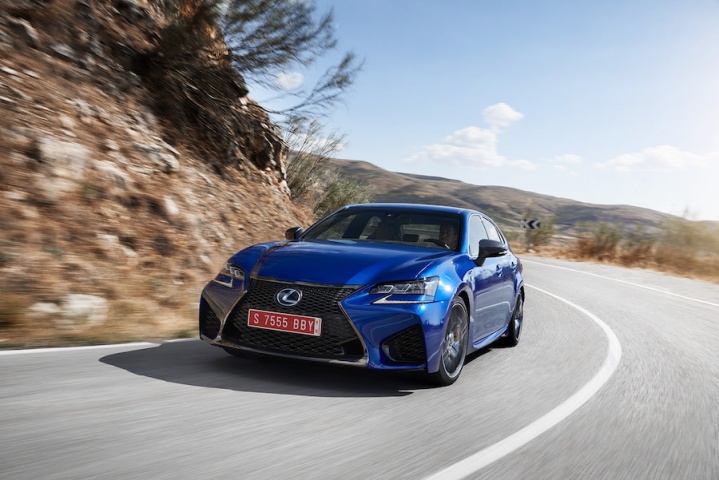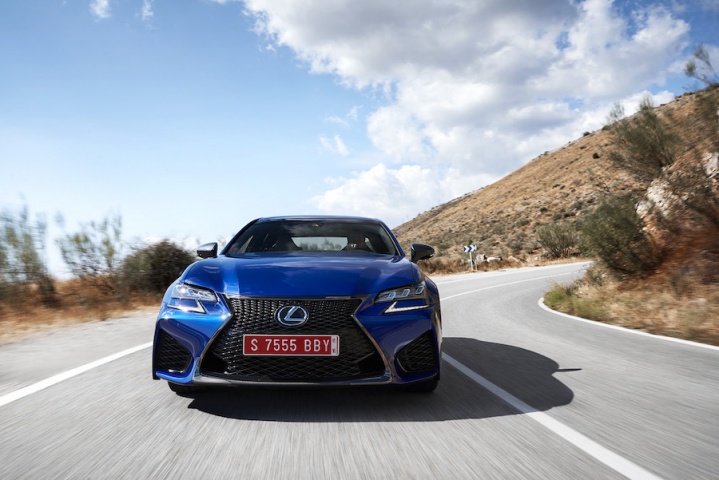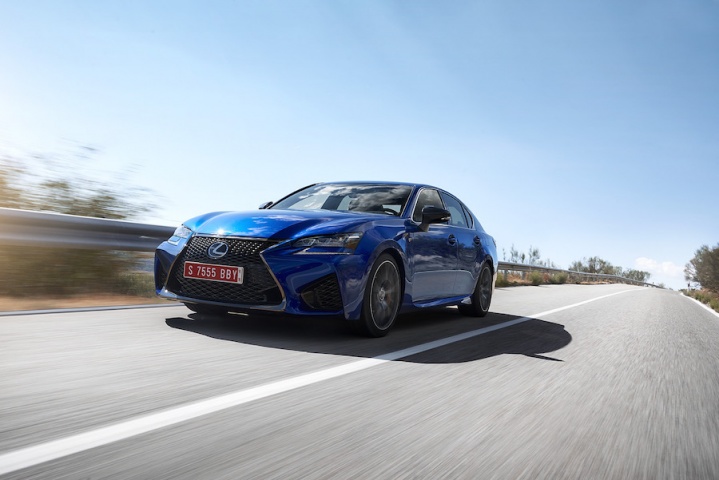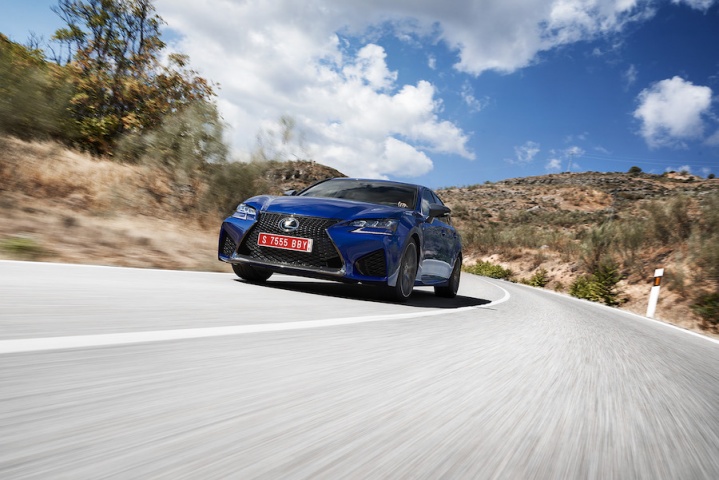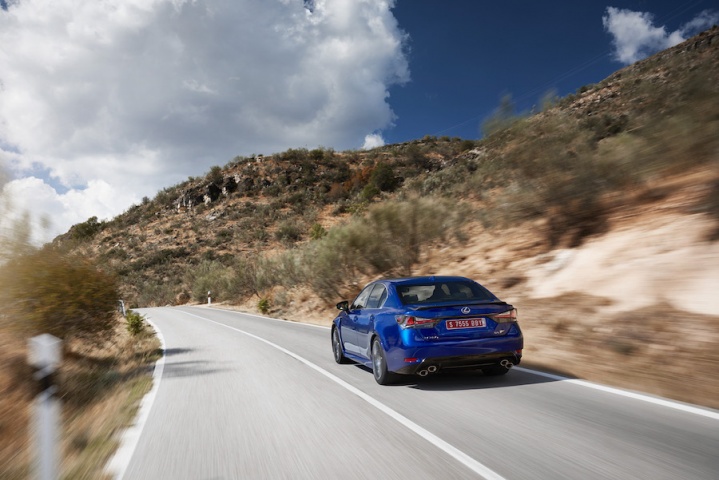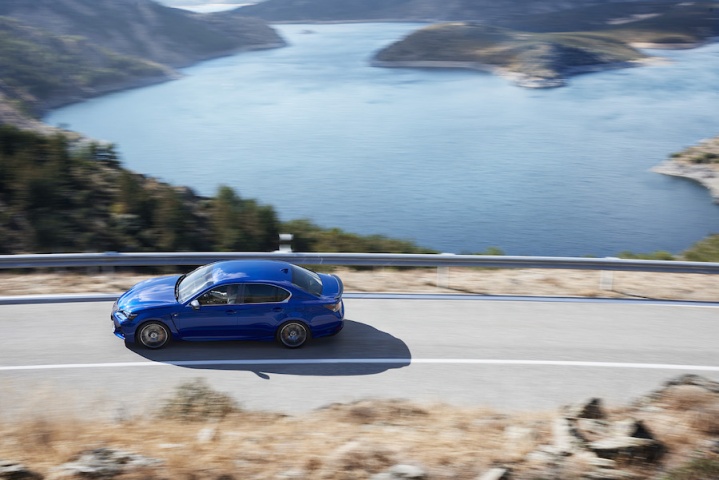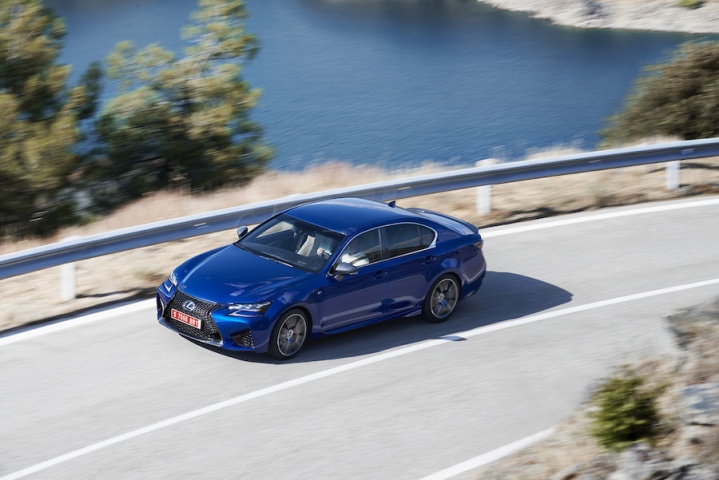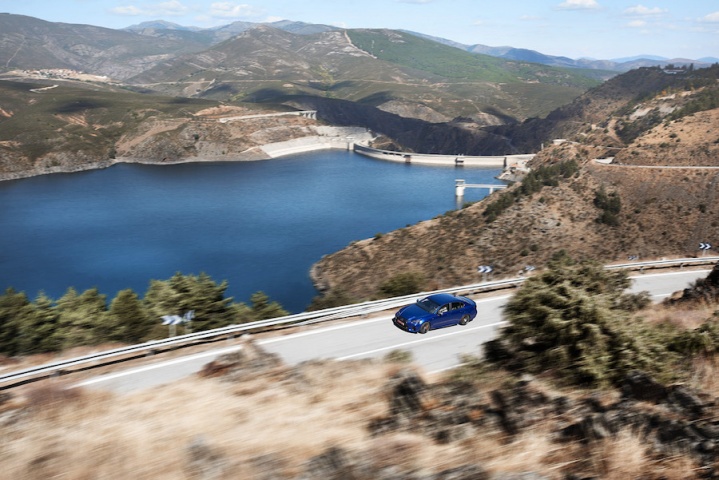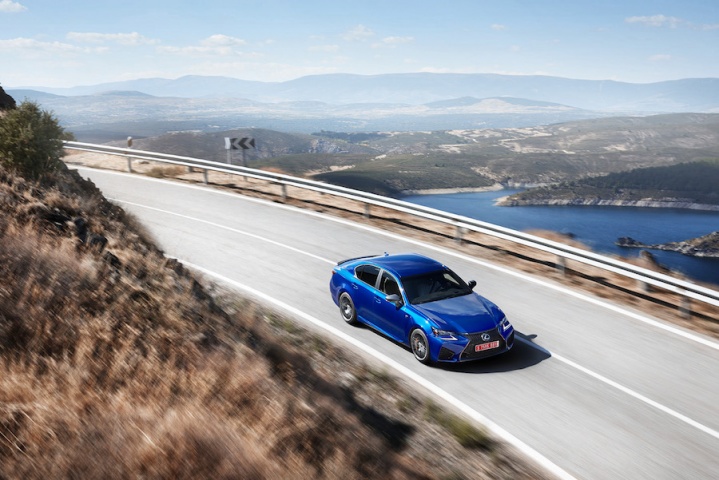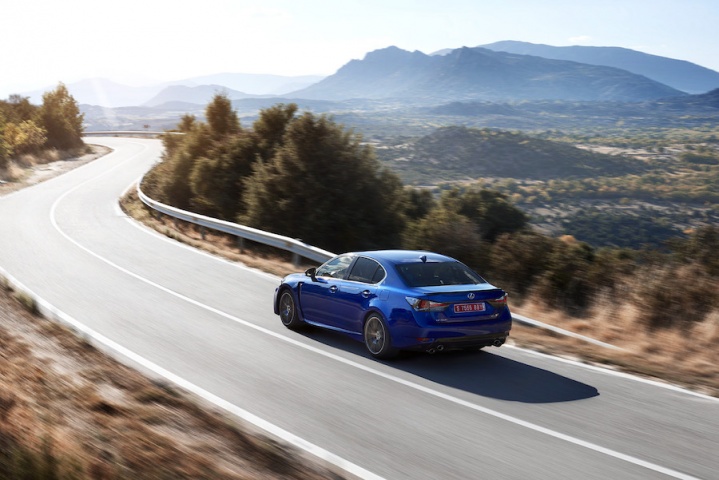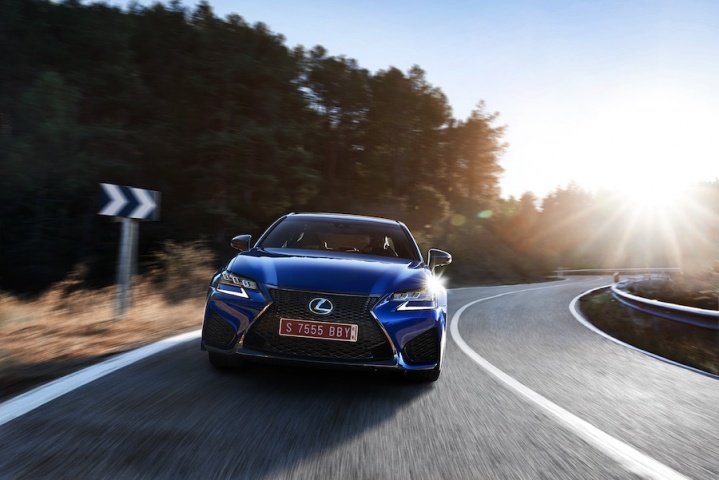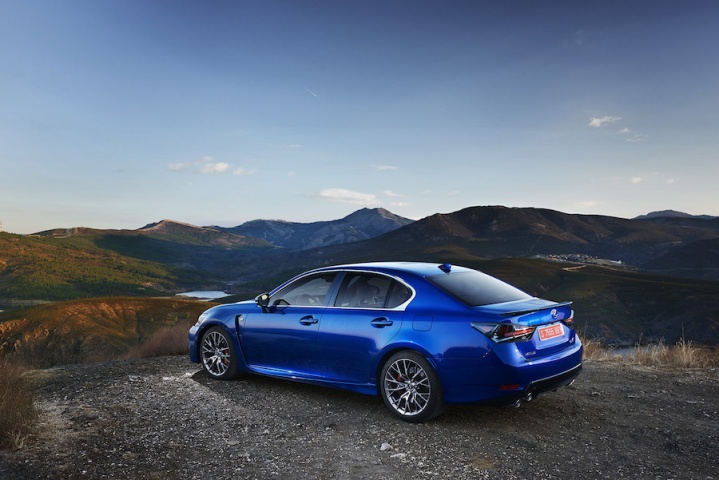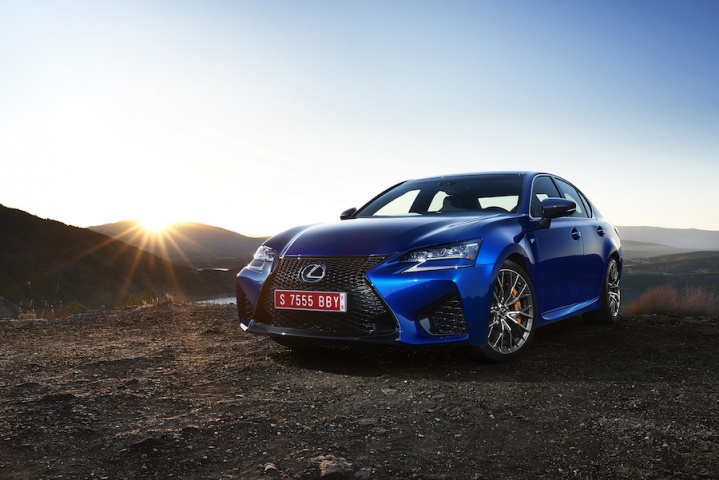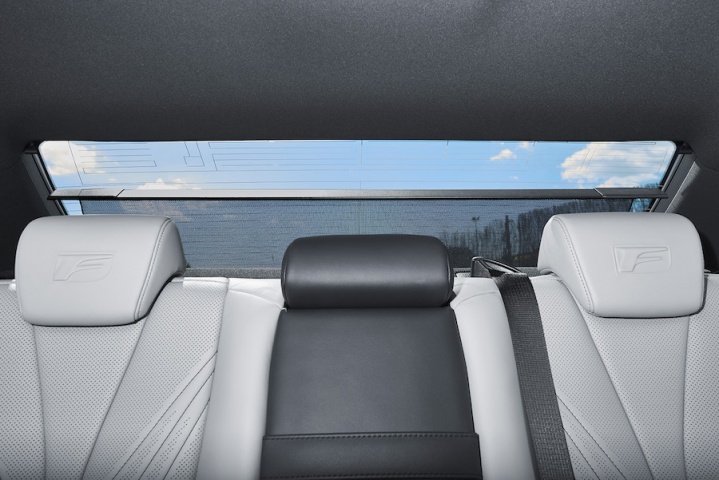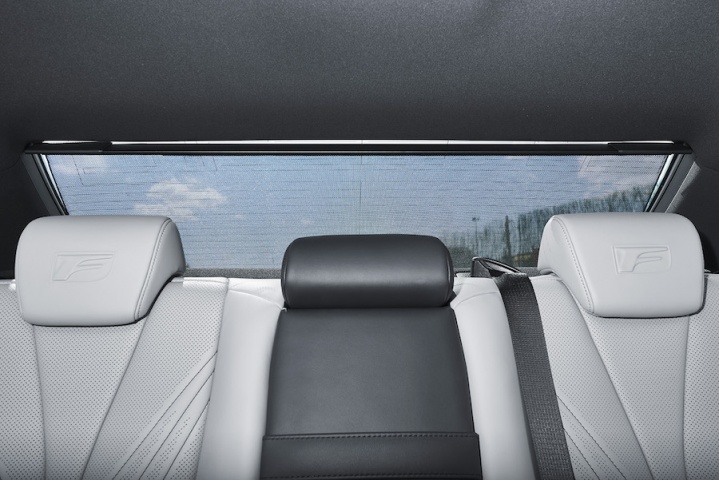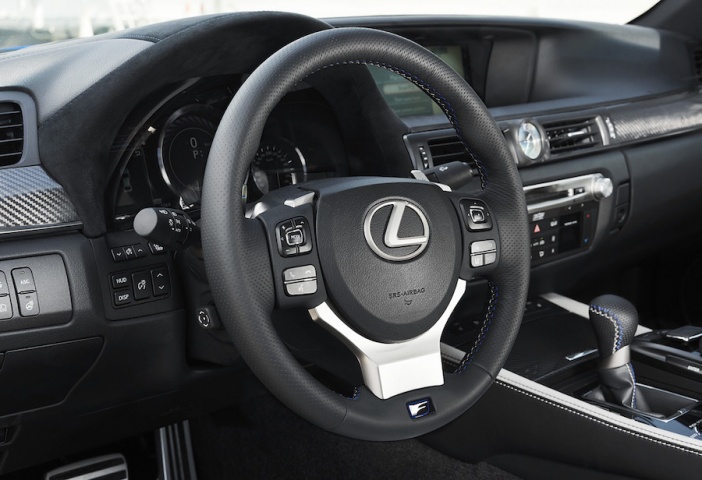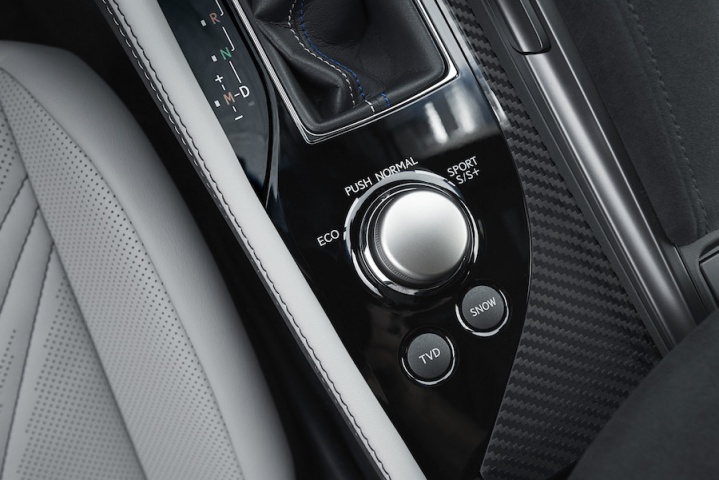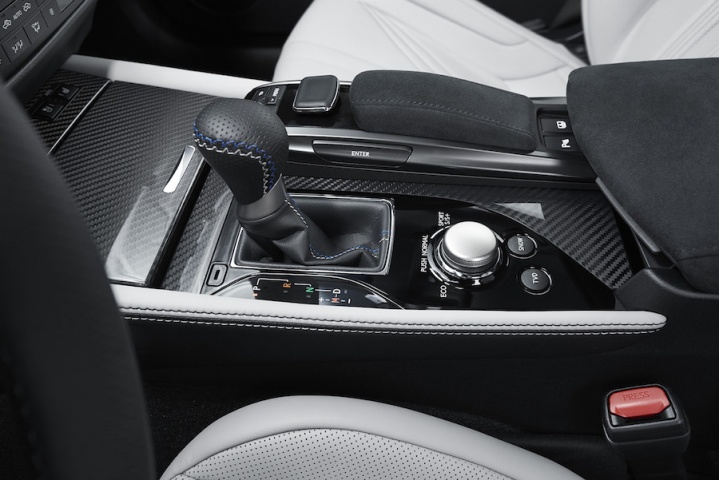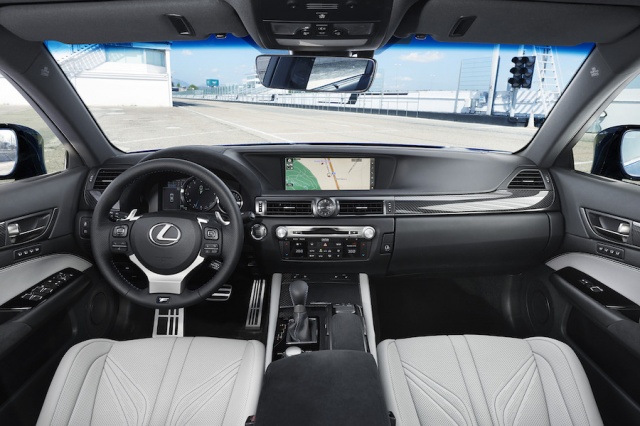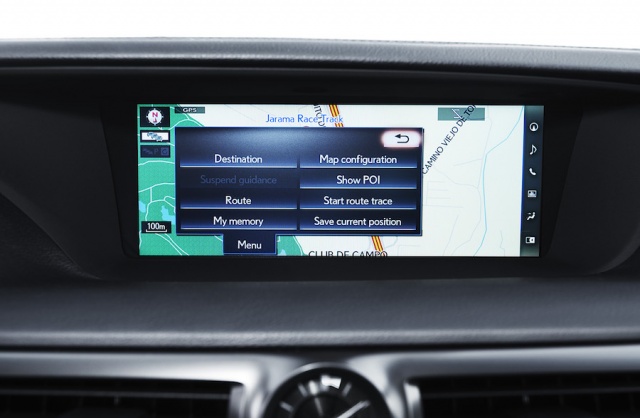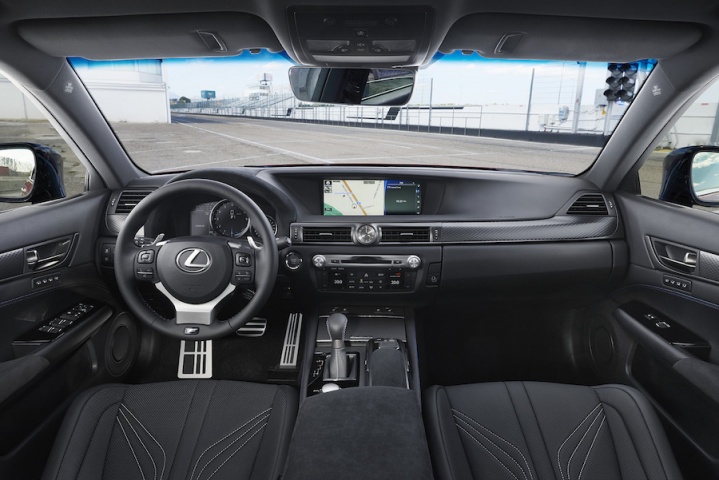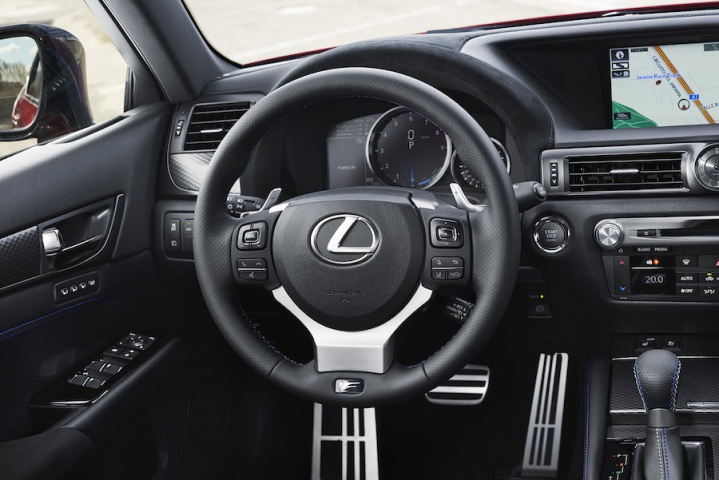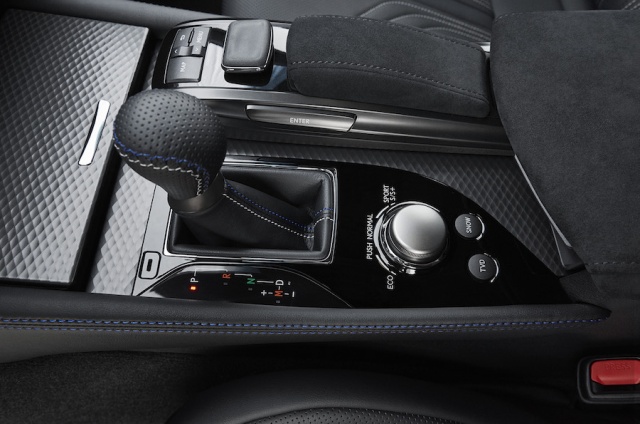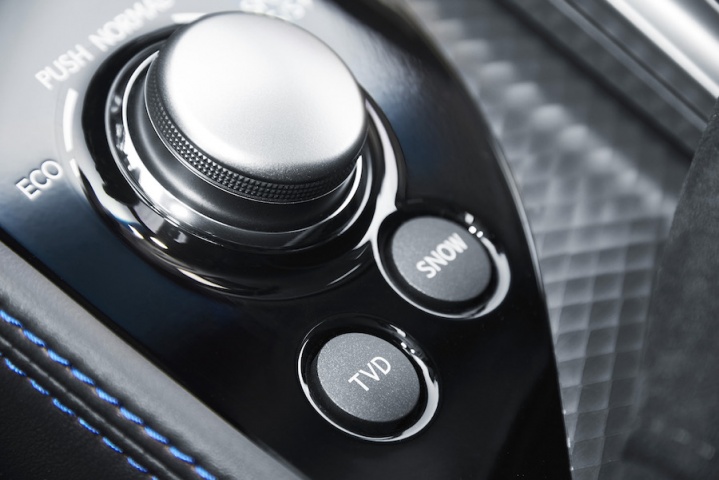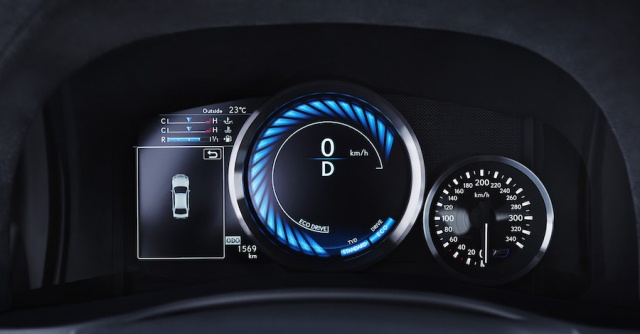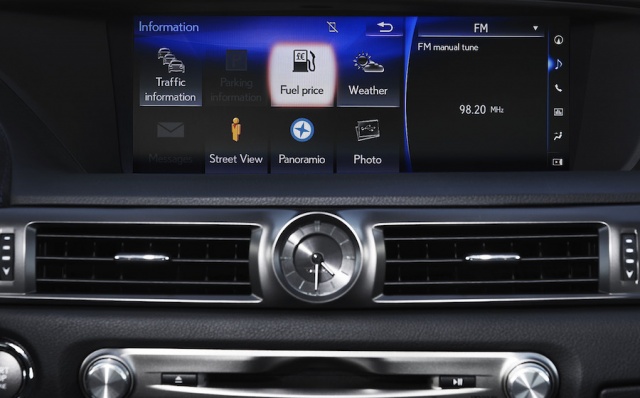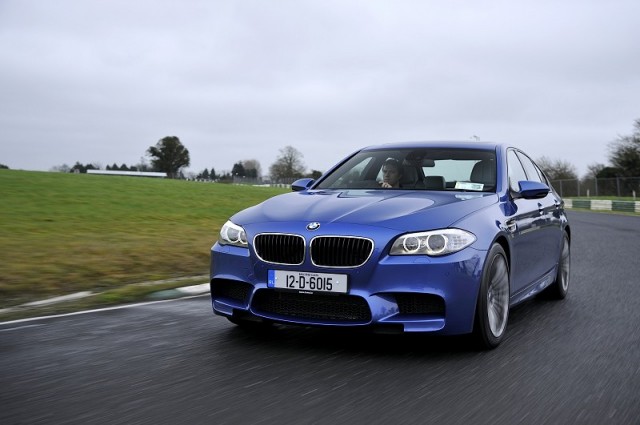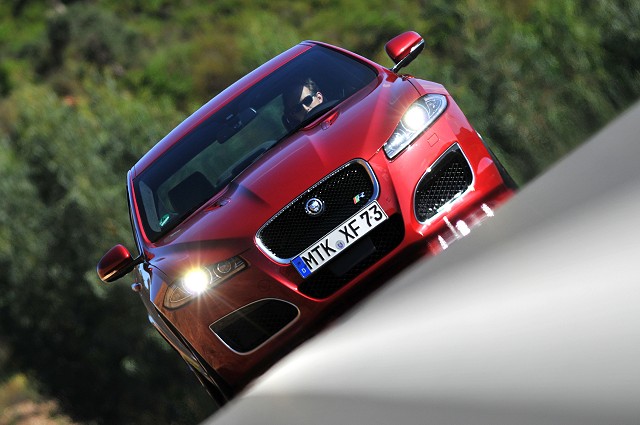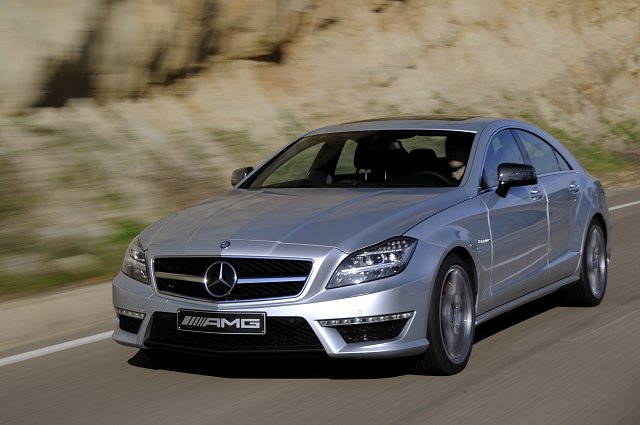While we weren't blown away by the Lexus RC F coupé, we have to concede that we're very happy it exists, as naturally aspirated high-performance engines are a dying breed. Fans of the high-revving V8 can now have it in the rather more practical GS saloon body, but that isn't the only thing it has going for it. We review it on road and track.
In the metal 4/5
At first glance you'd be forgiven for mistaking the new Lexus GS F for, say, a GS 450h F Sport, but the external updates are extensive. Up front there's a far more aggressive 'spindle grille' and deep bumper with huge outer air intakes. There are matching air outlets behind the front wheels too, accentuated by the 'F' badge, a new style of door mirror and sculpted side sills. The 19-inch wheels are forged from aluminium and fitted with 255/35 ZR19 tyres up front and wider, 275/35 ZR19 tyres at the back. Behind the wheels you'll see bright orange brake callipers. The GS F is much easier to identify from the rear, thanks to restyled and darkened lights, a carbon fibre boot spoiler and quad stacked exhaust outlets. There's also a new bumper incorporating a diffuser, which is part of a comprehensive suite of aerodynamic tweaks, many of which are hidden under the skin. Buyers can choose from eight paint colours: Azure Blue, Solar Flare, Mesa Red, Graphite Black, Sonic Titanium, Sonic Silver, Mercury Grey or F Sport White.
Lexus has done a good job on the cabin of the GS F. You'll notice the exceedingly comfortable sports leather seats up front first. They look great and the design is even echoed in the spacious rear bench. Front passengers get electric seat adjustment, plus heating and cooling. The three-spoke steering wheel and high-quality gearshift paddles are unique to the F model, as are the gear knob and pedals. The instruments are new to the GS too, with a large central speedometer rendered on a high-res TFT screen. Its appearance changes depending on driving mode selected. Elsewhere there are lashings of Alcantara trim and even a few carbon fibre inserts. Buyers can opt for grey, black or red upholstery.
Driving it 4/5
Heading to Spain to drive the Lexus GS F at its international launch, we assumed we'd experience dry and smooth roads and wheel out the usual 'but we'll have to wait and see what it's like on a wet November in the Dublin Mountains'. However, the gods 'kindly' rained on the plains in Spain instead and though the surfaces were, for the most part, smooth, it was a real challenge for a large and heavy front-engined, rear-drive sports saloon with 477hp at its disposal. Well, it should have been, but after a day at the wheel we had confidence in the Lexus to push on despite the conditions and revel in the deserted and twisting route.
It's all about the driving modes in the GS F. Leave it in its default settings and it's more luxury car with some underlining menace than a super saloon. The engine is relatively quiet unless you floor the throttle and the eight-speed automatic gearbox slurs quietly and smoothly between ratios. Somewhat surprisingly, the damping is not of the adaptive variety, so that may mean an overly stiff set-up for Irish back roads, but we found it a good compromise at the launch venue.
First thing to explore is the transmission. It's far more responsive if the lever is slotted left into manual mode and you control gear changes via the paddles. The shifts are crisper, if less smooth, and of course there are the expected throttle blips on down-change. Next item to play with is the tactile Drive Mode Select rotary button. Normal and Eco modes are offset by Sport S and Sport S+. The latter provides the most aggressive throttle map, quickens gear changes and reduces power steering assistance. It should just be labelled 'FUN'. And there's more. The GS F features a highly sophisticated rear differential Lexus refers to as the Torque Vectoring Differential (TVD). This apportions power to the rear wheels in varying amounts depending on the driving modes selected and the conditions. Drivers can choose from its standard setting or Slalom (more agile, making the car feel smaller and more responsive to steering inputs) and Track (aimed at providing more stability for really high-speed driving). Finally, there's the Vehicle Dynamics Integrated Management (VDIM) system, which controls the traction control, anti-lock brakes and stability control, but also interfaces with the TVD (confused by all the acronyms yet?). By default it's all operational in standard mode, but drivers can switch it into Sport and Expert modes to allow more freedom or switch it all off for total control of your own destiny...
The differential turns out to be key to the GS F's manners, on road and track. Even with VDIM switched off completely, in the streaming rain, the big Lexus is fun to hustle along a tortuously twisty road. It finds remarkable traction even in such conditions, giving the driver confidence to push on. When the limits of grip are overstepped it's quite quickly telegraphed and very easy to control with linear, well-weighted steering. The brakes are good too, with plenty of bite and good resistance to fade. Back in the real world, where few owners - even at this level - want to experience large amounts of oversteer or understeer, the GS F is good fun to thread through a sequence of corners. Front end grip is high, the steering is quick and it flows smoothly. It's composed and confident too.
I've nearly forgotten to mention the engine, surely one of the main reasons to go for the GS F over, say, a BMW M5. It's the same 5.0-litre V8 unit as in the RC F and while it's not perfect in terms of its acoustics or performance, it is still rather special. The inclusion of Active Sound Control (ASC), which 'synthesises' the sounds of the engine and exhaust and pumps them through the stereo, shows how much importance Lexus placed on the noise this car makes, but in reality that system is only of use at low speeds, as the V8 sounds suitably sensational as it revs through the baritone 4,000rpm region and homes in on its 7,300rpm rev limiter. The stats may show that twin-turbocharged cars are faster, but the Lexus GS F is rapid by any definition of the word.
What you get for your Money
At the time of writing, Lexus Ireland has not confirmed the price of the GS F for the Irish market, nor its specification, though we expect the latter to be more or less the same across Europe, including 19-inch alloy wheels, dual-zone climate control, leather upholstery, heated, cooled and electrically adjusted front seats, satnav via a 12.3-inch screen with the Lexus Remote Touch Interface and a host of safety technology including Pre-Crash Safety and adaptive cruise control. In other markets, the GS F costs more than the RC F. If that's the case in Ireland then it'll be more than €107,000.
Summary
We're pleasantly surprised to find that the new Lexus GS F is a better car than the RC F coupé that preceded it. Obviously it's more practical, but of more importance to people who buy cars such as this, it drives in a more cohesive and assured manner, mixing composure with engagement and, of course, that V8 soundtrack. That it looks better than the RC F is icing on the cake really. We also like that it doesn't really attempt to take on the latest generation of twin-turbocharged German super saloons, instead ploughing its own furrow.

